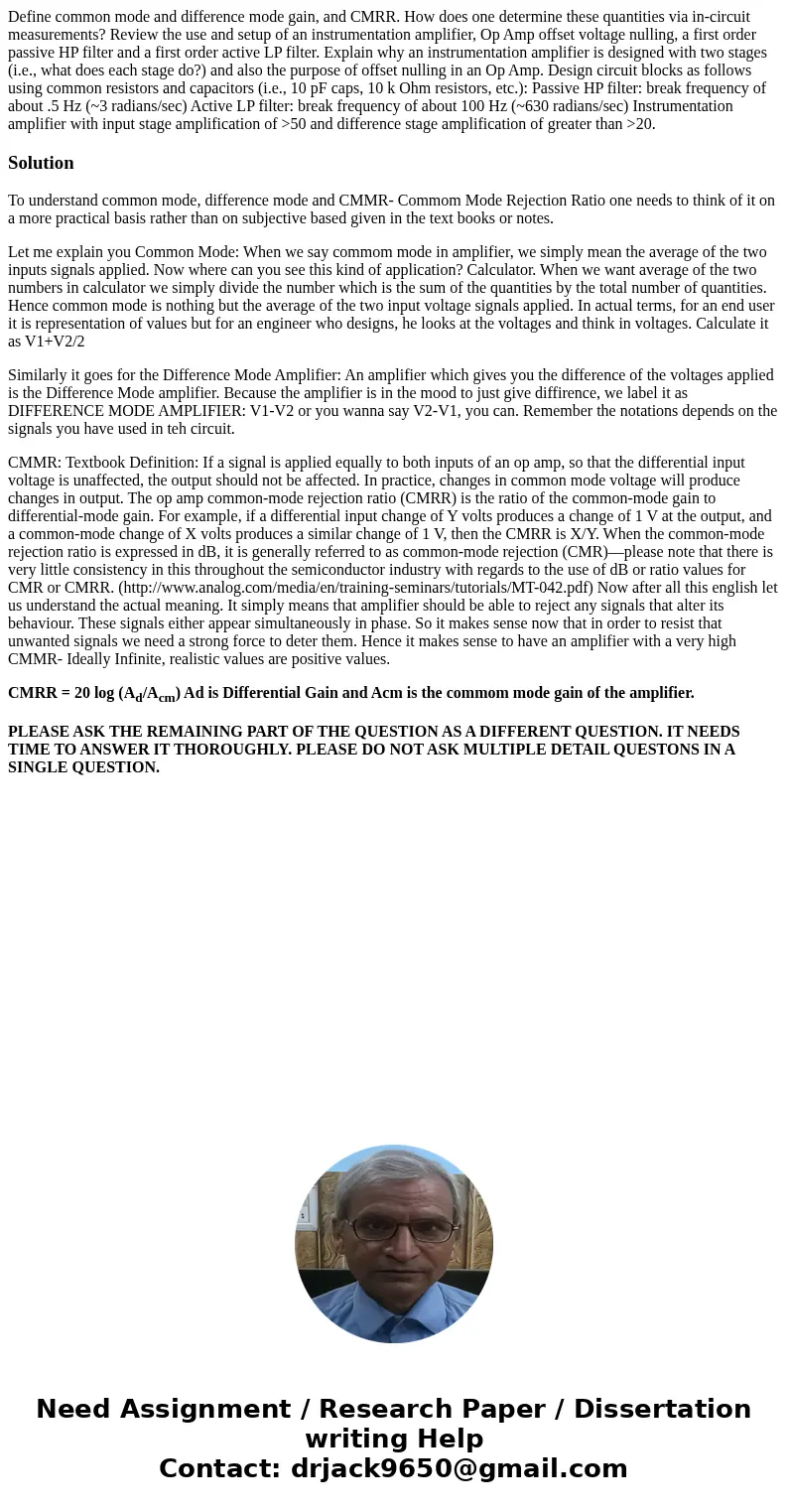Define common mode and difference mode gain and CMRR How doe
Solution
To understand common mode, difference mode and CMMR- Commom Mode Rejection Ratio one needs to think of it on a more practical basis rather than on subjective based given in the text books or notes.
Let me explain you Common Mode: When we say commom mode in amplifier, we simply mean the average of the two inputs signals applied. Now where can you see this kind of application? Calculator. When we want average of the two numbers in calculator we simply divide the number which is the sum of the quantities by the total number of quantities. Hence common mode is nothing but the average of the two input voltage signals applied. In actual terms, for an end user it is representation of values but for an engineer who designs, he looks at the voltages and think in voltages. Calculate it as V1+V2/2
Similarly it goes for the Difference Mode Amplifier: An amplifier which gives you the difference of the voltages applied is the Difference Mode amplifier. Because the amplifier is in the mood to just give diffirence, we label it as DIFFERENCE MODE AMPLIFIER: V1-V2 or you wanna say V2-V1, you can. Remember the notations depends on the signals you have used in teh circuit.
CMMR: Textbook Definition: If a signal is applied equally to both inputs of an op amp, so that the differential input voltage is unaffected, the output should not be affected. In practice, changes in common mode voltage will produce changes in output. The op amp common-mode rejection ratio (CMRR) is the ratio of the common-mode gain to differential-mode gain. For example, if a differential input change of Y volts produces a change of 1 V at the output, and a common-mode change of X volts produces a similar change of 1 V, then the CMRR is X/Y. When the common-mode rejection ratio is expressed in dB, it is generally referred to as common-mode rejection (CMR)—please note that there is very little consistency in this throughout the semiconductor industry with regards to the use of dB or ratio values for CMR or CMRR. (http://www.analog.com/media/en/training-seminars/tutorials/MT-042.pdf) Now after all this english let us understand the actual meaning. It simply means that amplifier should be able to reject any signals that alter its behaviour. These signals either appear simultaneously in phase. So it makes sense now that in order to resist that unwanted signals we need a strong force to deter them. Hence it makes sense to have an amplifier with a very high CMMR- Ideally Infinite, realistic values are positive values.
CMRR = 20 log (Ad/Acm) Ad is Differential Gain and Acm is the commom mode gain of the amplifier.
PLEASE ASK THE REMAINING PART OF THE QUESTION AS A DIFFERENT QUESTION. IT NEEDS TIME TO ANSWER IT THOROUGHLY. PLEASE DO NOT ASK MULTIPLE DETAIL QUESTONS IN A SINGLE QUESTION.

 Homework Sourse
Homework Sourse